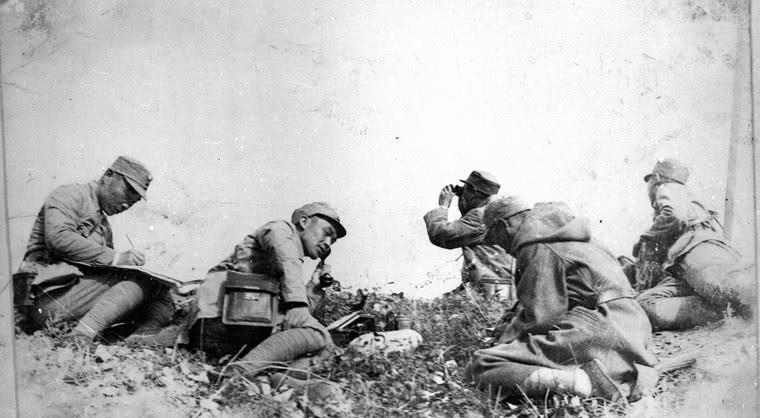
On July 7, 1937, the "Lugou Bridge Incident" broke out, and soon the anti-Japanese national united front was formed, and countless Chinese sons and daughters threw themselves into the anti-Japanese battlefield. Whenever the War of Resistance Against Japanese Aggression is mentioned, the first thing mentioned in our textbooks is the Pingxingguan Victory, which refers to the battle in which the 115th Division of the Eighth Route Army ambushed the Japanese army near Pingxingguan on September 25, 1937 and won the first victory against Japan.
This victory shattered the myth of the invincibility of the Japanese army, and further clarified that it was of great strategic significance to carry out an ambush operation in a situation where the enemy was strong and we were weak. From the perspective of the campaign, the Battle of the Eighth Route Army at Pingxingguan was a flank and rear ambush battle in conjunction with the main battlefield of Pingxingguan, annihilating a heavy unit of the Twenty-first Brigade of the Japanese Army, about 1,000 people (the number is disputed).
The main course of the battle was as follows: In the early morning of September 25, the Heavy Japanese troops marched west along the lingqiu to Pingxingguan highway, and entered the encirclement of the 115th Division of the Eighth Route Army at about 7 o'clock, and the battle immediately began. The entire battle lasted about 6 hours, and by 13:00 in the afternoon, the battle was over, and the total number of troops of the Eighth Route Army was more than 6,000 (4,000 people), and more than 600 casualties were inflicted.
In addition to killing more than a thousand Japanese troops, the Eighth Route Army destroyed more than 100 cars and 200 horse-drawn carriages, captured 1 Type 92 infantry gun, more than 20 light and heavy machine guns, more than 1,000 rifles, more than 50 military horses, and a large number of other military supplies.
Judging from the course of the battle, this was indeed a large-scale ambush battle, but why did not a single Japanese prisoner be captured? After the battle, Lin Biao summed up the issue of captives in "Pingxingguan Combat Experience", "The Japanese soldiers refused to surrender their guns until they died, first of all, because of the education of Japanese Bushido and fascist education, but also because they were too cruel to the Chinese military and people, I am afraid that Chinese retaliation." ”
For the fact that not a single Japanese soldier was captured, the platoon commander of the 3rd Battalion, Tian Shien, was also impressed. Tian Shien said: "The fierce battle was until 3 p.m., and the Eighth Route Army launched a general offensive. The devils could no longer resist and collapsed one after another. At this time, the gunshots were thinner, the shouts were gradually weakened, and the devils were doing the final dying struggle. Except for one breakthrough, all the Japanese troops surrounded on the ditch road were killed, and none of them were captured. ”
The fundamental reason why the Japanese army was reluctant to be taken prisoners was due to the influence of militarism. The Japanese believed that once they were taken prisoner, they were the greatest disloyalty to the emperor, which was even more humiliating than being killed in battle. In my early years, I obtained a copy of the Japanese Army's "Battle Front Training" during World War II, which was compiled by the Japanese Military Department according to the requirements of Hideki Tojo and was a must-read publication for the Japanese army, with the purpose of strengthening the Japanese army's pledge to the emperor to the death.
It is clearly written in the "Battle Front Training" that "life is not ashamed of prisoners, and it is better to die than to leave a stigma of sin and misfortune", and once there is no possibility of breaking through, you should commit suicide to apologize to the people and be loyal to the emperor. The author also noticed that the preface to the "Battle Front Training" made strict requirements for the Japanese army.
"As a soldier, you cannot accept the insult of being imprisoned and imprisoned while you are alive, and you should go forward with loyalty and filial piety, even though you are still alive." The battle front is based on the emperor's order, and it is necessary to give full play to the true essence of the imperial army, attack and win, and spread the imperial road all over the world, so that the enemy can look up to the majesty and dignity of our emperor and remember it. Therefore, it is not difficult to understand that the Eighth Route Army failed to capture the Japanese army.
Reference: Battle Experience of PingxingGuan